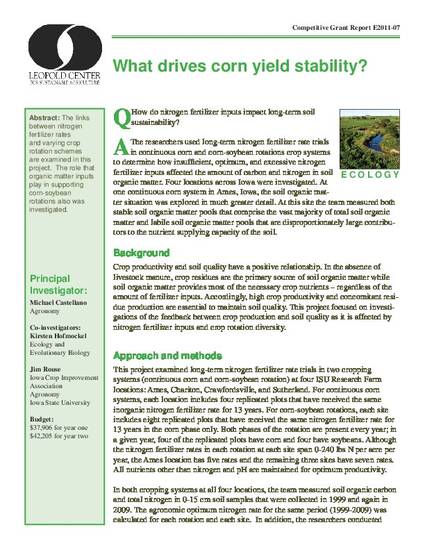
Other
What drives corn yield stability in the context of climate variability?
Leopold Center Completed Grant Reports
Project ID
E2011-07
Abstract
The links between nitrogen fertilizer rates and varying crop rotation schemes are examined in this project. The role that organic matter inputs play in supporting corn-soybean rotations also was investigated.
Key Question
How do nitrogen fertilizer inputs impact long-term soil sustainability?
Findings
The researchers used long-term nitrogen fertilizer rate trials in continuous corn and corn-soybean rotations crop systems to determine how insufficient, optimum, and excessive nitrogen fertilizer inputs affected the amount of carbon and nitrogen in soil organic matter. Four locations across Iowa were investigated. At one continuous corn system in Ames, Iowa, the soil organic matter situation was explored in much greater detail. At this site the team measured both stable soil organic matter pools that comprise the vast majority of total soil organic matter and labile soil organic matter pools that are disproportionately large contributors to the nutrient supplying capacity of the soil.
Principal Investigator(s)
Michael Castellano
Co-Investigator(s)
Kirsten Hofmockel, Jim Rouse
Year of Grant Completion
2014
Disciplines
Citation Information
Michael J. Castellano, Kirsten S. Hofmockel and Jim R. Rouse. "What drives corn yield stability in the context of climate variability?" (2014) Available at: http://works.bepress.com/castellano-michael/13/
